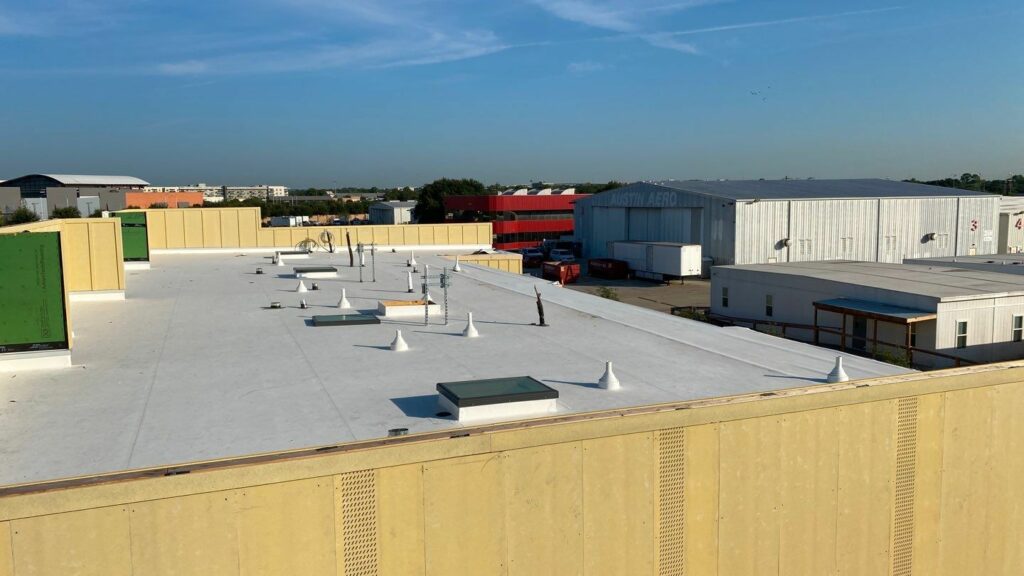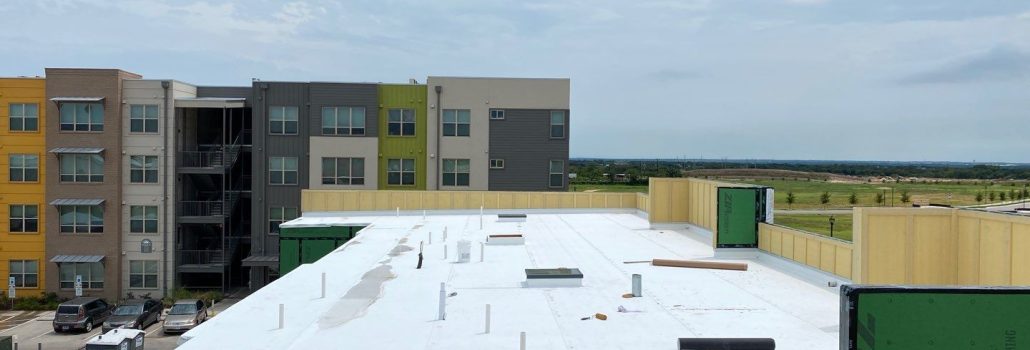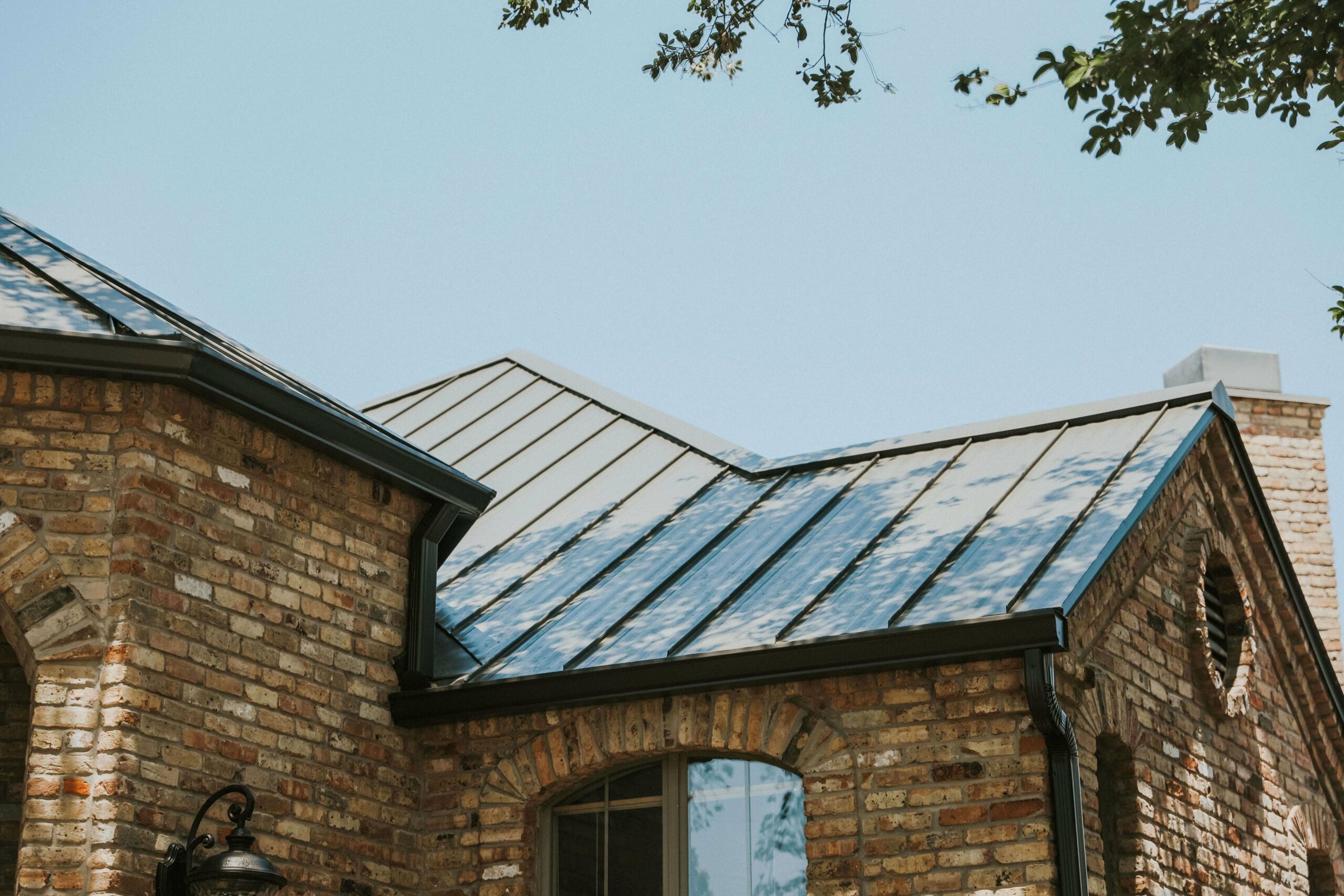When it comes to choosing the right roofing material for commercial buildings, TPO (Thermoplastic Olefin) and EPDM (Ethylene Propylene Diene Monomer) are two of the most popular options. Both materials offer unique benefits and are suitable for various applications, but which one is better? We want to compare TPO and EPDM across several key factors to help you make an informed decision.

1. Material Composition and Structure
TPO:
-
TPO is a single-ply roofing membrane made from a blend of polypropylene and ethylene-propylene rubber.
-
It is known for its reflective white surface, which helps in reducing heat absorption and improving energy efficiency.
EPDM:
-
EPDM is a synthetic rubber roofing membrane composed of ethylene and propylene.
-
It typically comes in black, though white versions are available, and is known for its flexibility and durability.
2. Durability and Longevity
TPO:
-
TPO roofs generally have a lifespan of 15-20 years.
-
They are resistant to punctures, tears, and chemical exposure, making them suitable for various climates and industrial applications.
-
However, the longevity of TPO can be variable depending on the manufacturer and specific product quality.
EPDM:
-
EPDM roofs can last 25-30 years or more with proper maintenance.
-
They are highly resistant to UV radiation, ozone, and extreme weather conditions.
-
EPDM’s flexibility makes it less prone to cracking in cold weather.
3. Energy Efficiency
TPO:
-
TPO’s reflective white surface is excellent for reducing cooling costs in warmer climates.
-
It meets or exceeds energy efficiency standards set by various regulatory bodies, making it an eco-friendly choice.
EPDM:
-
Standard black EPDM absorbs heat, which can be beneficial in colder climates as it reduces heating costs.
-
White EPDM options are available to reflect sunlight and improve energy efficiency in warmer regions, though they are less common.
4. Installation and Maintenance
TPO:
-
TPO is relatively easy to install using heat-welded seams, which provide strong, waterproof joints.
-
It requires fewer seams compared to other materials due to its wide sheets, reducing the potential for leaks.
-
Regular maintenance is necessary to inspect seams and ensure there are no punctures or tears.
EPDM:
-
EPDM is also easy to install, typically using adhesives or mechanical fasteners.
-
Its flexibility simplifies installation on roofs with multiple penetrations or irregular shapes.
-
Maintenance involves periodic inspections for seam integrity and repairing any damage promptly.
5. Cost
TPO:
-
TPO is generally more cost-effective upfront compared to EPDM.
-
Installation costs can be lower due to the ease of handling and fewer seams.
EPDM:
-
EPDM tends to be slightly more expensive than TPO, both in terms of material and installation costs.
-
However, its longer lifespan can translate into better long-term value.
6. Environmental Impact
TPO:
-
TPO is recyclable and considered environmentally friendly due to its energy-efficient properties.
-
It does not contain chlorine or other harmful chemicals.
EPDM:
-
EPDM is also recyclable and has a relatively low environmental impact.
-
Its long lifespan reduces the frequency of replacement, contributing to sustainability.
Both TPO and EPDM have their strengths and are excellent choices for commercial roofing, but their suitability depends on your specific needs and circumstances.
-
TPO is ideal for buildings in warmer climates where energy efficiency is a priority. Its cost-effectiveness and ease of installation make it an attractive option for many commercial applications.
-
EPDM excels in durability and flexibility, making it suitable for a wide range of environments, especially those with extreme weather conditions. Its longer lifespan can offer better long-term value despite a higher initial cost.

Ultimately, the decision between TPO and EPDM should be based on factors such as climate, budget, building structure, and long-term maintenance considerations. Consulting with a professional roofing contractor can provide tailored advice and ensure you choose the best roofing material for your commercial building.
We at The Guild want to answer any questions you may have about TPO or EPDM roof installation. We take pride in the fact that we are experts in anything you might need help on your roofline up! We not only are roofers but we are also ventilation, skylight, and gutter pros.
Contact The Guild Collective for all of your roofing needs or questions about skylight options. Let’s get together and figure out the best skylight fit for your home and budget. If you have any questions about TPO or EPDM, please set up your free in-home consultation today.













